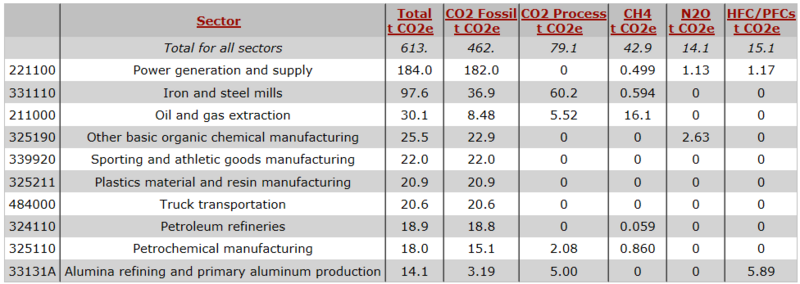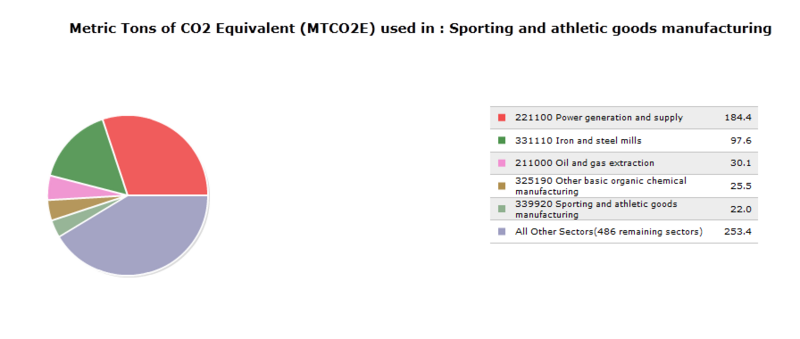Snowboard
From DDL Wiki
(→Bill of Materials) |
|||
| Line 119: | Line 119: | ||
| Plastic | | Plastic | ||
| Fixes upper part of boot to binding | | Fixes upper part of boot to binding | ||
| - | | Injection | + | | Injection Molding |
| 16 | | 16 | ||
| [[Image:snowboard_6.jpg|100px]] | | [[Image:snowboard_6.jpg|100px]] | ||
| Line 191: | Line 191: | ||
| Plastic | | Plastic | ||
| Limits angle of pad (n°24) | | Limits angle of pad (n°24) | ||
| - | | Injection | + | | Injection Molding |
| 10 | | 10 | ||
| [[Image:snowboard_15.jpg|100px]] | | [[Image:snowboard_15.jpg|100px]] | ||
| Line 200: | Line 200: | ||
| Plastic | | Plastic | ||
| Attaches angle limiter (n°15) to pad (n°24) | | Attaches angle limiter (n°15) to pad (n°24) | ||
| - | | Injection | + | | Injection Molding |
| 9 | | 9 | ||
| [[Image:snowboard_16.jpg|100px]] | | [[Image:snowboard_16.jpg|100px]] | ||
| Line 209: | Line 209: | ||
| Plastic | | Plastic | ||
| Fixes lower part of boot to binding | | Fixes lower part of boot to binding | ||
| - | | Injection | + | | Injection Molding |
| 9 | | 9 | ||
| [[Image:snowboard_17.jpg|100px]] | | [[Image:snowboard_17.jpg|100px]] | ||
| Line 245: | Line 245: | ||
| Plastic | | Plastic | ||
| Attaches buckle and fixes lower part of boot | | Attaches buckle and fixes lower part of boot | ||
| - | | Injection | + | | Injection Molding |
| 10 | | 10 | ||
| [[Image:snowboard_21.jpg|100px]] | | [[Image:snowboard_21.jpg|100px]] | ||
| Line 272: | Line 272: | ||
| Plastic | | Plastic | ||
| Holds rear of boot | | Holds rear of boot | ||
| - | | Injection | + | | Injection Molding |
| 133 | | 133 | ||
| [[Image:snowboard_24.jpg|100px]] | | [[Image:snowboard_24.jpg|100px]] | ||
| Line 281: | Line 281: | ||
| Plastic | | Plastic | ||
| Frame of binding | | Frame of binding | ||
| - | | Injection | + | | Injection Molding |
| 276 | | 276 | ||
| [[Image:snowboard_25.jpg|100px]] | | [[Image:snowboard_25.jpg|100px]] | ||
| Line 371: | Line 371: | ||
| Plastic | | Plastic | ||
| Holds buckle pieces in place | | Holds buckle pieces in place | ||
| - | | Injection | + | | Injection Molding |
| 4 | | 4 | ||
| [[Image:snowboard_35.jpg|100px]] | | [[Image:snowboard_35.jpg|100px]] | ||
| Line 425: | Line 425: | ||
| Plastic | | Plastic | ||
| Opens or closes buckle | | Opens or closes buckle | ||
| - | | Injection | + | | Injection Molding |
| 4 | | 4 | ||
| [[Image:snowboard_41.jpg|100px]] | | [[Image:snowboard_41.jpg|100px]] | ||
| Line 470: | Line 470: | ||
| Plastic | | Plastic | ||
| Fixes upper part of boot | | Fixes upper part of boot | ||
| - | | Injection | + | | Injection Molding |
| 65 | | 65 | ||
| [[Image:snowboard_47.jpg|100px]] | | [[Image:snowboard_47.jpg|100px]] | ||
Revision as of 17:45, 11 February 2012
Contents |
Executive Summary
Stakeholders
We have identified four major stakeholders in the life cycle of the competitor's product: the user, the retailer, the manufacturer and the shipping company. Below is a list of the needs of each stakeholder concerning the product.
Users
The user is the main person to use the product, therefore his needs are the ones that should be first taken into consideration when redesigning the competitor's product.
- Low price
- Light with sufficient rigidity and flexibility
- Durable
- Board should have sharp edges but remain safe to carry
- Adjustability and strength of bindings
- Ergonomics of bindings: they should be easy to strap on and release
- Appearance, branding
Retailers
The needs of the retailer are centered around making profit by selling the product, and facilitating the after-sales service.
- Profitability
- Appearance, branding, appeal
- Easy to store: small weight and dimensions
- Serviceability: standardization of parts
Manufacturers
The needs of the manufacturers are aimed at easy and cheap manufacturability.
- Simple geometries
- Limited number of parts
- Cheap materials that are easy to work with
- Cheap manufacturing processes
- No toxic materials
- Easy to store: small weight and dimensions
Shipping Companies
The shipping companies want an easy to carry product.
- Package should be light and compact
- Durable: resistance to vibrations and shock
- Replacement parts must be easily shippable
Use Study
The main steps in using the product are listed below.
- Travel to mountain and ski resort
- Purchase ticket
- Put on boots, hat, gloves
- Strap front foot into binding
- Take ski lift and get to the top of mountain
- Strap rear foot into binding
- Go down the slope: set edge, shift center of gravity and twist board to turn, traversing the fall line
- Unstrap rear foot and return to step 5
Mechanical Function
Product Parts
Exploded Assembly
Bill of Materials
Table: Components of Snowboard
Design for Manufacture and Assembly
Failure Modes and Effects Analysis
Design for Environment
A snowboard has very low greenhouse gas emissions in use. The only emissions associated with use are the additional emissions from transport, which we consider negligable if transported inside a vehicle, but could be significant if transported externally, as for example on the roof of a car which would add drag.
The emissions caused by the added drag can be estimated by considering a increase in fuel consumption of 5% when using a ski rack [X]. When estimating an average driving distance to snowboard as 200 miles, a car with 20 miles/gallon, 5 trips/year, a 10 year life span and an average of 3 snowboards in the rack, the amount of gas needed to compensate for the ski rack can be estimated to 8.3 gallons. Considering 8.9 kg CO2 per gallon of gas [Y], the total CO2 emissions from the use of a snowboard is approximately 75 kg. For such a rough estimate it is natural to round it to the order of magnitude of 0.1t CO2.
To estimate the amount of CO2 emissions from manufacturing we used the EIO-LCA method. This gave a total of manufacturing emissions as 0.25t CO2 when considering an average price of 400$ for a snowboard.
Table [Z]: CO2 emissions for 1 million $ spent in the sporting and athletic goods manufacturing sector

However the method is very unprecise in our case as snowboards only represents a small fraction of the sporting and athletic goods manufacturing sector, so the value found represents the average emissions from all sports equipment which could vary enormously from one product to another.
The estimated total CO2 emissions from the board are thus 0.35t. The conclusions are that if a tax of 40$ per ton CO2 is implemented, the snowboard would cost 14 dollars more, which could be a significant increase to manufactures. Transporting the snowboard accounts for around 30% of this CO2 cost and reducing this is what our group identifies as the main area to improve the snowboards carbon footprint.
references:
[X] http://editorial.autos.msn.com/article.aspx?cp-documentid=435406 [Y] http://www.eia.gov/oiaf/1605/coefficients.html













































